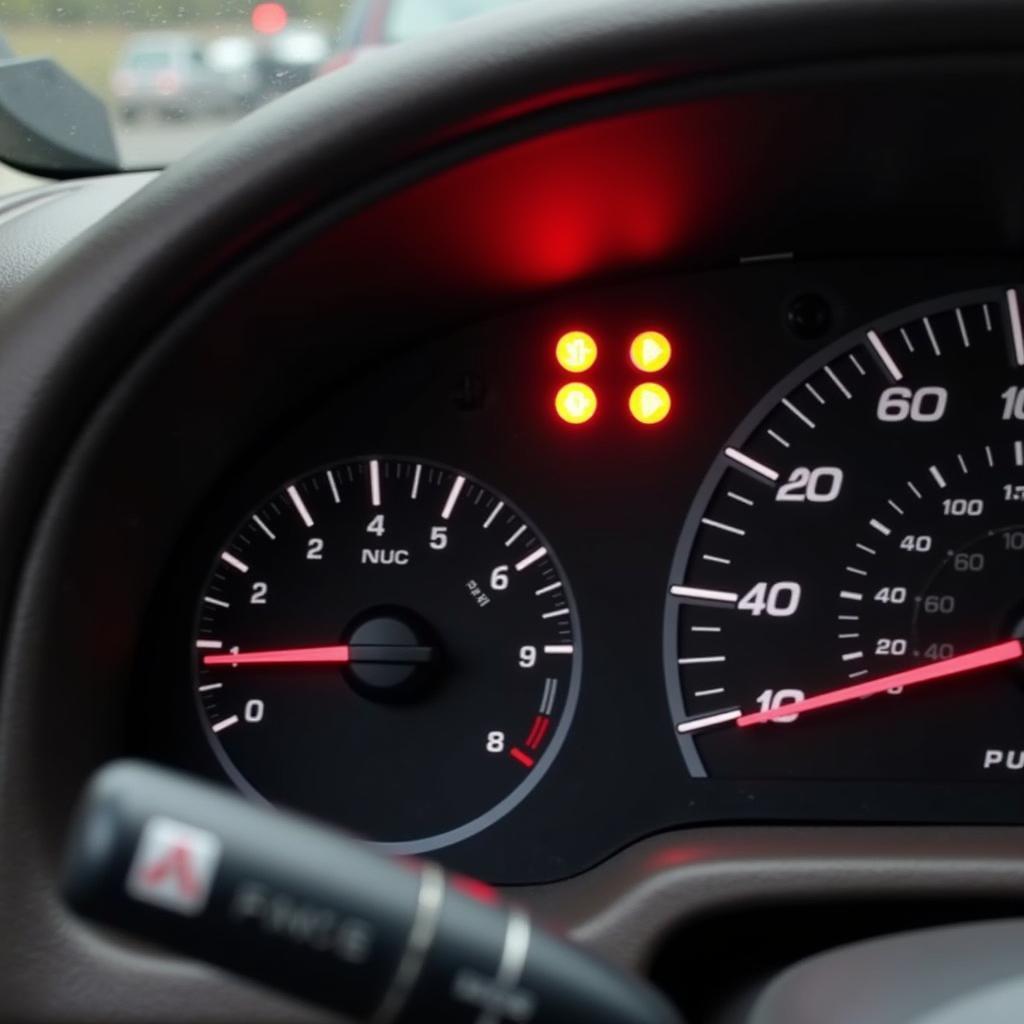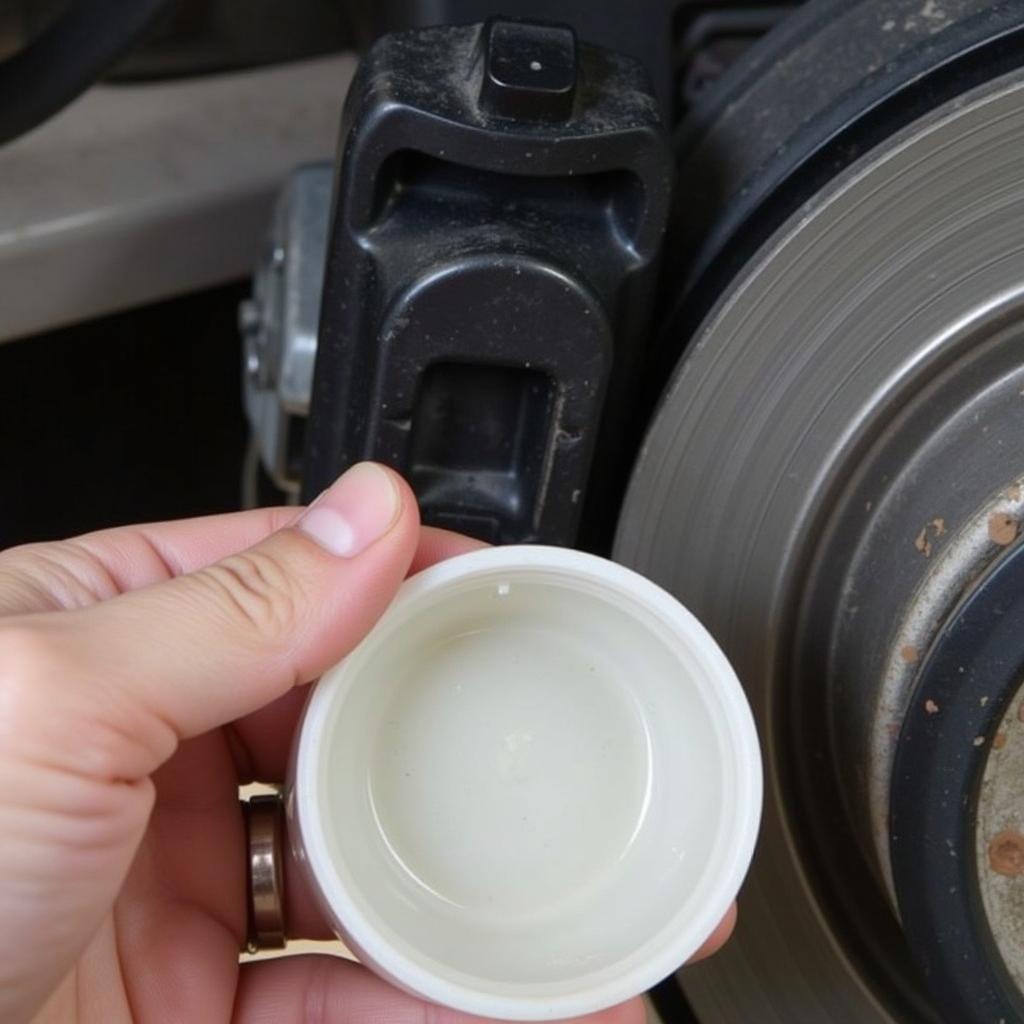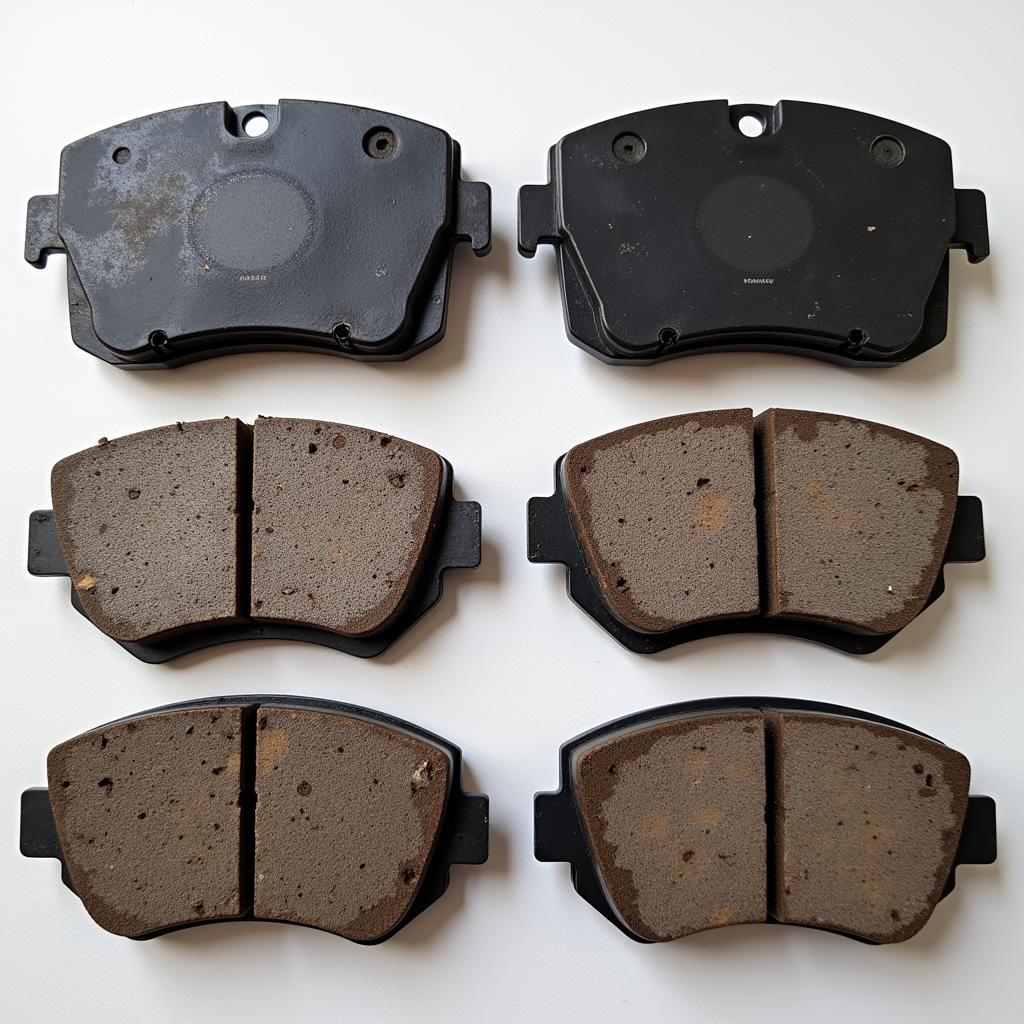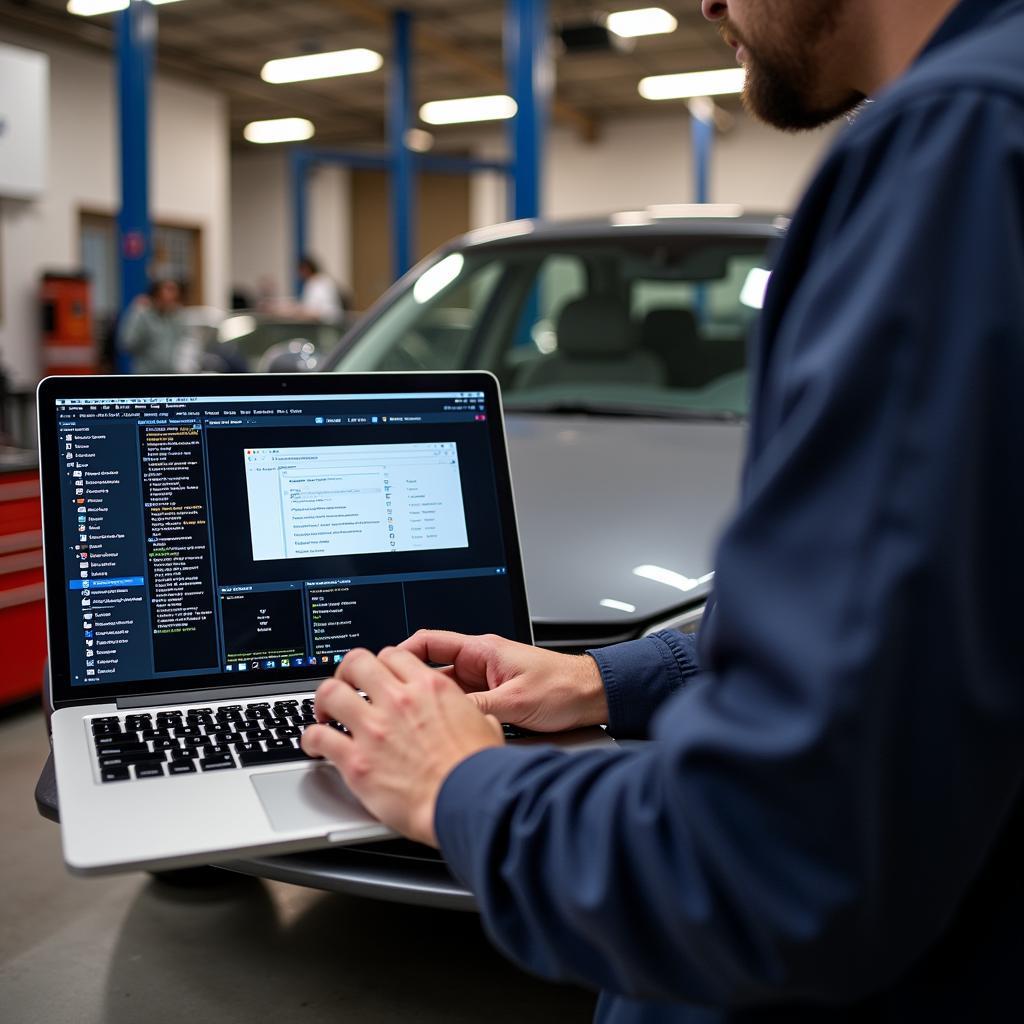If your brake warning light is on in your 2000 Ford Excursion, it’s a signal that demands immediate attention. This article provides a comprehensive guide to diagnosing and addressing the potential causes, ranging from simple checks to more complex issues requiring professional assistance. Understanding the reasons behind this warning light and knowing how to troubleshoot it can save you time, money, and potentially prevent a serious accident.
Understanding the Brake Warning Light
The brake warning light in your 2000 Ford Excursion serves a dual purpose. It indicates both a potential issue with your braking system and a low brake fluid level. Ignoring this warning can lead to reduced braking performance, making your vehicle unsafe to drive. Therefore, it’s crucial to understand what triggers this light and how to react accordingly.
Common Causes of a Brake Warning Light in a 2000 Ford Excursion
There are several reasons why your brake warning light might be illuminated. Some common culprits include:
- Low Brake Fluid: This is the most common cause. Brake fluid naturally depletes over time as brake pads wear down.
- Worn Brake Pads: Thin brake pads require more fluid to engage the brakes, leading to a lower fluid level and triggering the warning light.
- Brake Fluid Leaks: Leaks in the brake lines, calipers, or wheel cylinders can cause a rapid drop in brake fluid level.
- Faulty Brake Light Switch: The brake light switch activates the brake lights when you press the pedal. A malfunctioning switch can sometimes trigger the brake warning light.
- ABS Issues: Problems with the Anti-lock Braking System (ABS), such as a faulty sensor or control module, can also illuminate the warning light.
 Brake Warning Light Illuminated on the Dashboard of a 2000 Ford Excursion
Brake Warning Light Illuminated on the Dashboard of a 2000 Ford Excursion
Troubleshooting the Brake Warning Light
Here’s a step-by-step guide to help you diagnose the issue:
- Check the Brake Fluid Level: Open the hood and locate the brake fluid reservoir. Check the fluid level. If it’s low, add brake fluid that meets the specifications for your 2000 Ford Excursion.
- Inspect for Leaks: Carefully examine the brake lines, calipers, and wheel cylinders for any signs of leakage. Look for wet spots or dripping fluid.
- Check the Brake Pads: Inspect the thickness of your brake pads. If they appear thin or worn, they likely need replacement.
- Test the Brake Light Switch: A faulty brake light switch may not only activate the brake warning light but also prevent your brake lights from functioning correctly. Test the switch by pressing the brake pedal and having someone verify if the brake lights illuminate.
 Checking the Brake Fluid Level in a 2000 Ford Excursion
Checking the Brake Fluid Level in a 2000 Ford Excursion
When to Seek Professional Help
If you’ve performed these checks and the brake warning light remains on, or if you’ve identified a leak or other issue you can’t fix yourself, it’s time to consult a qualified mechanic. Brakes are a critical safety system, and any problems should be addressed by a professional.
Why is my brake light still on after adding fluid?
Adding fluid might temporarily extinguish the light, but if the underlying issue isn’t addressed, it will return. A persistent brake light signals a problem that needs professional diagnosis and repair.
How much does it cost to fix a brake warning light issue?
The cost varies depending on the cause. A simple brake fluid top-up is inexpensive, while replacing brake components like calipers or the ABS module can be significantly more costly.
“Regular brake inspections are essential for maintaining safety and preventing more expensive repairs down the line,” advises John Miller, a seasoned automotive technician with over 20 years of experience. “Ignoring the brake warning light can lead to costly and potentially dangerous consequences.”
 Worn Brake Pads on a 2000 Ford Excursion
Worn Brake Pads on a 2000 Ford Excursion
Conclusion
A brake warning light on your 2000 Ford Excursion is a serious issue that should never be ignored. By following the troubleshooting steps outlined in this article, you can identify the potential cause and take appropriate action. Remember, if you’re unsure about any aspect of brake repair, consult a qualified mechanic to ensure your vehicle’s safety and prevent further damage. Addressing the brake warning light promptly will ensure your 2000 Ford Excursion remains safe and reliable on the road.
FAQ
- What does the brake warning light mean? It indicates low brake fluid or a problem with the braking system.
- Can I drive with the brake warning light on? It’s highly unsafe and could lead to brake failure.
- How often should I check my brake fluid? At least once a month.
- What type of brake fluid should I use in my 2000 Ford Excursion? Consult your owner’s manual for the correct specifications.
- How long do brake pads last? Typically between 25,000 and 70,000 miles, depending on driving conditions.
- What are the signs of a brake fluid leak? Wet spots near the wheels, a soft brake pedal, or a low brake fluid level.
- Is it expensive to fix a brake fluid leak? The cost depends on the location and severity of the leak.

